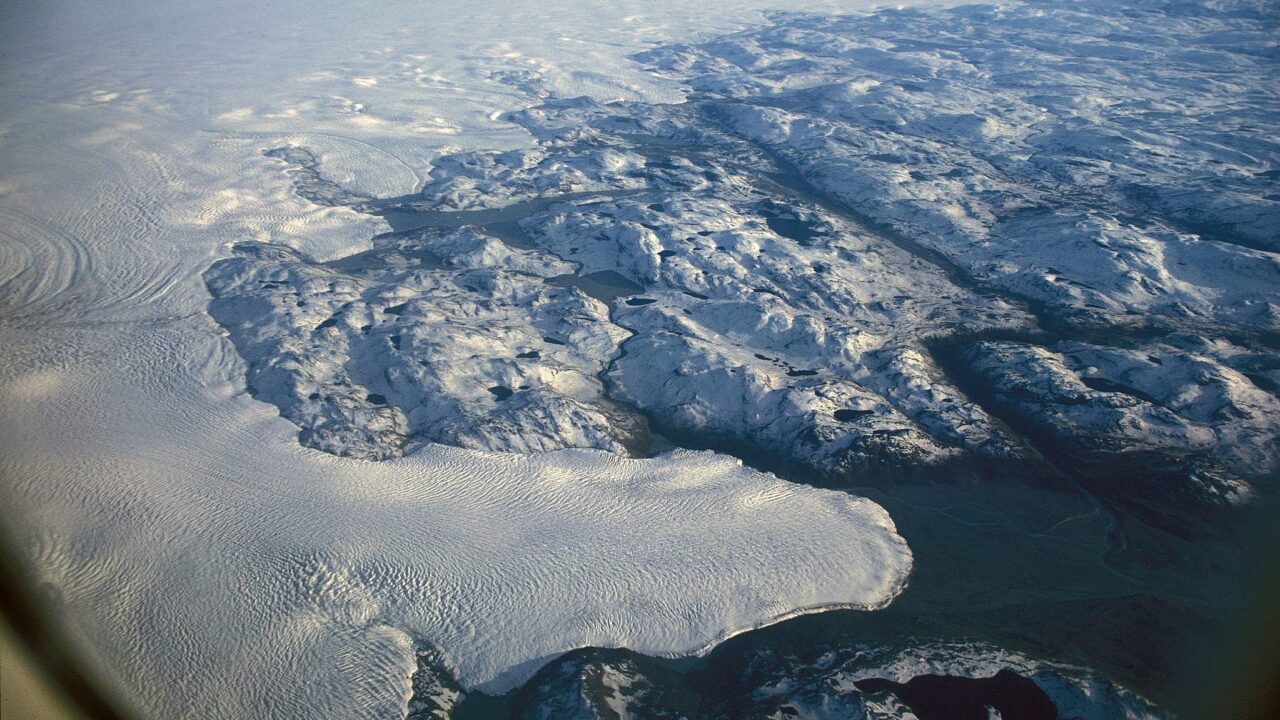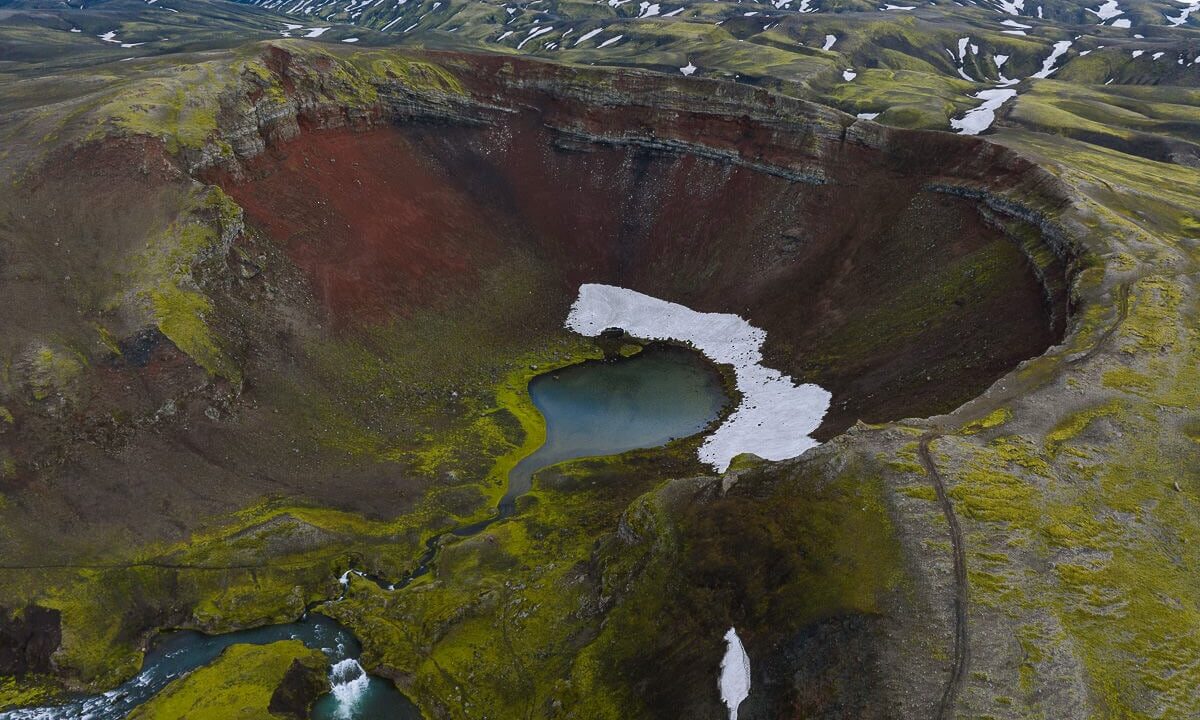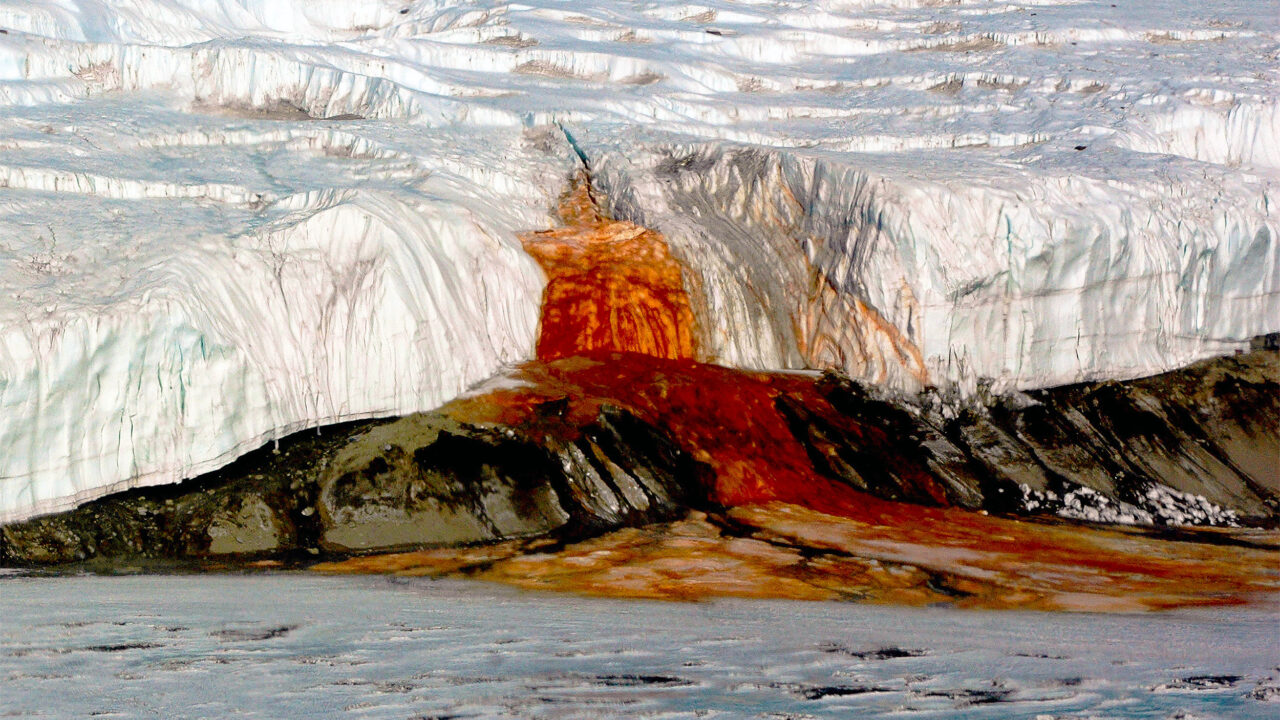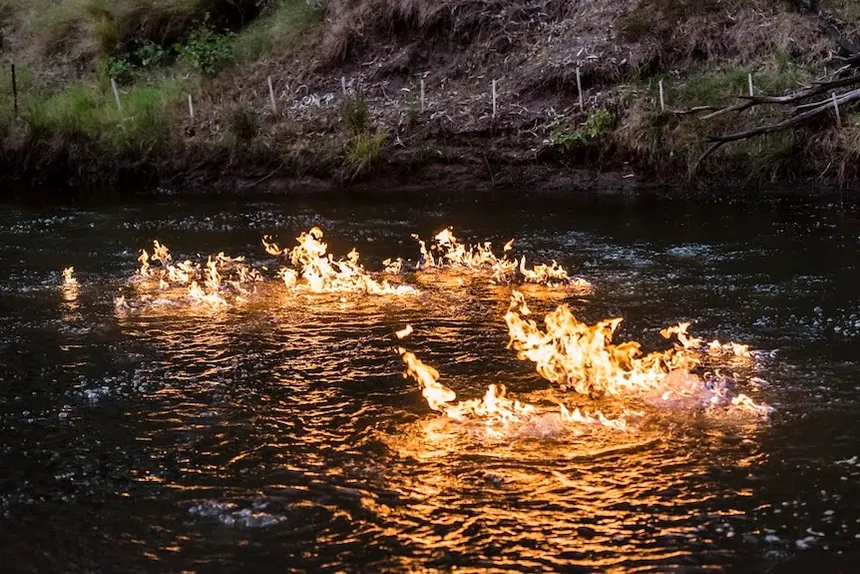Imagine walking or boating across a river and seeing flames flicker on its surface. Not from something burning on the water, but from natural gas bubbling up from beneath it. It sounds like science fiction, but it’s a real phenomenon that has occurred in Australia’s Condamine River.
What Happened: The Condamine River , Queensland
Location: Condamine River, near Chinchilla, Queensland, Australia.
Phenomenon: Methane gas bubbles rise from the riverbed and spread across the surface. When exposed to a flame or spark, the gas can ignite creating the illusion of a “burning river.”
The phenomenon gained international attention after Jeremy Buckingham, a Greens Party politician, ignited the gas with a lighter as part of a protest. The video went viral, sparking debate across media outlets.
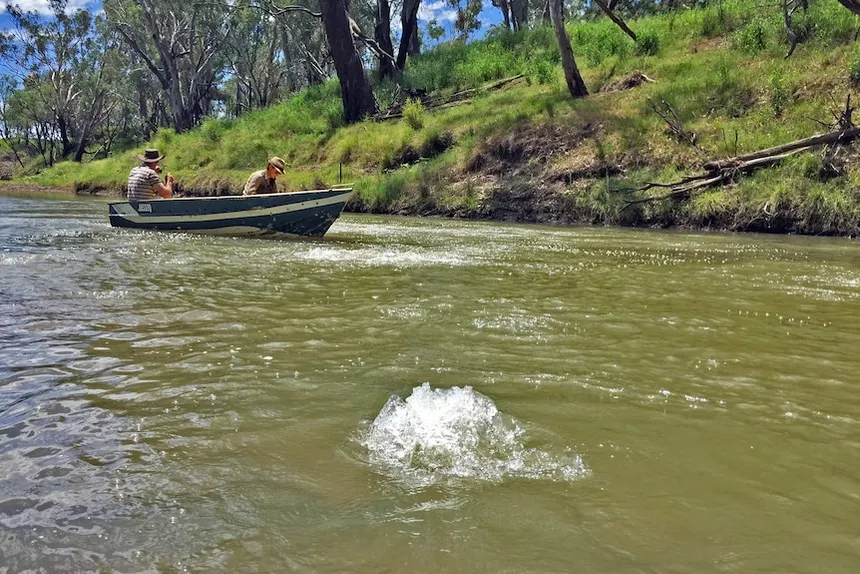
Geological Causes and Contributing Factors
1. Trapped Methane Gas
The Condamine River flows over layers of coal-rich rock known as the Walloon Coal Measures. These rocks naturally release methane through cracks and faults, allowing the gas to escape into the river.
2. Groundwater Pressure and Geological Changes
After heavy rains or flooding, groundwater pressure can force methane out through fractures. Conversely, during droughts or shifts in land pressure, the pathways for gas migration can change, causing more gas to leak into the river.
3. Debate Over Human Activity
Some have linked the methane leaks to coal seam gas (CSG) operations and fracking in the region, arguing that industrial extraction could increase gas seepage.
However, research by CSIRO (Australia’s national science agency) suggests that much of the gas in the Condamine River may be naturally occurring. Still, the proximity of gas fields has made it difficult to separate natural seepage from human influence.
Environmental Impacts and Concerns
- Greenhouse Gas Emissions: Methane is a potent greenhouse gas, about 25 times more powerful than CO₂ in trapping heat. Continuous seepage contributes to climate change.
- Water Quality Issues: The appearance of gas bubbles can signal shifts in groundwater flow and potential contamination risks.
- Public Safety Risks: While officials state the methane levels are not immediately dangerous to humans, the presence of flammable gas near the surface creates potential fire hazards.
Monitoring and Mitigation Efforts
- Scientific Research: Agencies like CSIRO are studying the extent, sources, and evolution of methane seepage in the Condamine River.
- Industrial Intervention: Gas companies have implemented strategies to capture or redirect gas before it reaches the river, aiming to reduce surface bubbling.
- Public and Regulatory Dialogue: Local communities, environmentalists, and government regulators continue to discuss transparency, monitoring, and accountability for the long-term impacts of gas extraction and natural seepage.
Why This Phenomenon Matters
A “burning river” is rare and visually dramatic but it’s also a reminder of how natural geological processes can interact with human activity in complex ways.
- It demonstrates how scientific explanations underlie even the strangest natural events.
- It highlights the importance of environmental regulation in managing industrial activity.
- It serves as a warning about the fragile balance between energy extraction and ecosystem preservation.
Conclusion
The “Burning River” of Australia’s Condamine River is a striking example of how nature can produce extraordinary and alarming phenomena. At its core, it’s a story of methane gas escaping from deep coal seams and igniting upon contact with air.
Yet beyond the spectacle lies a deeper conversation about climate, geology, and human responsibility. Whether the flames come from nature or human intervention, they remind us that the boundaries between the two are often blurred and that careful science, monitoring, and stewardship are essential to protect both the planet and its people.


